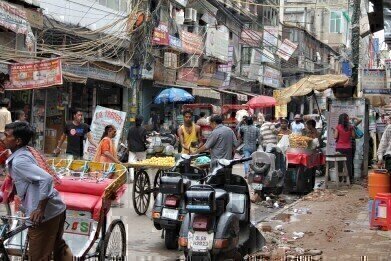Air Clean Up
Is the Delhi Smog a One-Off?
Nov 17 2016
Pollution levels in the Indian capital of New Delhi reached critical levels this month as schools were closed across the city. The extreme smog was caused by the recent Diwali festival, a Hindu celebration of lights involving the letting off of thousands of fireworks all over town.
However, the current crisis is only the latest in a string of problems faced by the Indian government regarding their air pollution. For many years now, India has vied with its neighbour China for the unwanted title of most polluted country in the world.
A serious concern
India’s struggles with air quality did not arise all of a sudden because of the Diwali festival. The country’s rapid industrial growth over recent years has led to a plethora of power plants and fossil fuel-powered energy stations opening up all over the country, which has seen emissions of nitrogen oxides (NOx) skyrocket all over the nation.
Of course, this is nowhere more prevalent than in megacities like New Delhi, where the exorbitant population entails the widespread use of passenger cars. The exhaust fumes from these vehicles, many of which are older and less environmentally friendly than newer models, contribute to the growing problem, leading to incredibly polluted airways.
Indeed, New Delhi was recently named the most polluted city in the world and this latest crisis merely highlights that fact.
Diwali a highlighter, not a catalyst
The proliferation of fireworks being let off over the festive period may have exacerbated the air quality issue to a concerning degree – recent monitoring efforts recorded particulate matter 2.5 (PM2.5) levels at roughly 90 times the level recommended as safe by the World Health Organisation (WHO) – they can certainly not be blamed as the sole cause of the pollution.
Instead, it is the government’s sluggishness in reacting to the growing problem that must be held accountable. Whereas the rest of the world is engaged in attempting to reduce their carbon footprint and bring emissions under control in keeping with the Paris Agreement signed last December, India are instead intent of increasing their energy output.
With an ever-increasing population to satisfy, it’s easy to see why Indian politicians are prioritising the here-and-now over the long-term effects of air pollution. However, by turning to coal-fired power plants as the primary source for their new energy needs, they are placing all their hopes in the most pollutant of fossil fuels. The opposite approach should be adopted.
Action needed now
To be fair, the Indian government has taken several steps to try and address these problems. In February, they introduced an odd-even car license plate policy, whereby only half of all passenger vehicles would be allowed on roads on alternate dates. Despite the best intentions of the initiative, there has been polarised debate about how successful it really was.
Meanwhile, they have also attempted to curb emissions by phasing out older buses and trucks and imposing sales taxes on older passenger cars. Again, these measures are a step in the right direction, but by focusing solely on emissions from vehicles and not from power plants, the government is only addressing a small part of the problem.
Clean, renewable forms of energy generation are the key to solving India’s air pollution challenges, but for a country with limited resources and an urgent need of energy now, investment in green energy forms is all too often seen as an unaffordable luxury by the powers that be. Unless they want the air quality crisis to continue indefinitely and endanger the health of millions of citizens for generations to come, that attitude must change.
Events
Nov 26 2024 Paris, France
Nov 27 2024 Istanbul, Turkey
H2O Accadueo International Water Exhibition
Nov 27 2024 Bari, Italy
Biogas Convention & Trade Fair 2024
Nov 27 2024 Hanover, Germany
Dec 11 2024 Shanghai, China







-as-feedstock.jpg)






